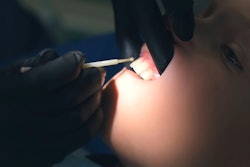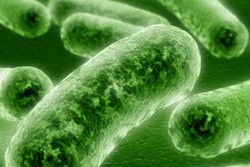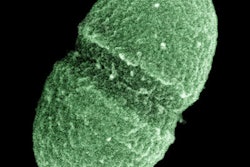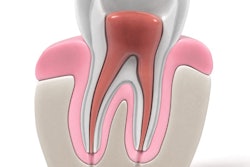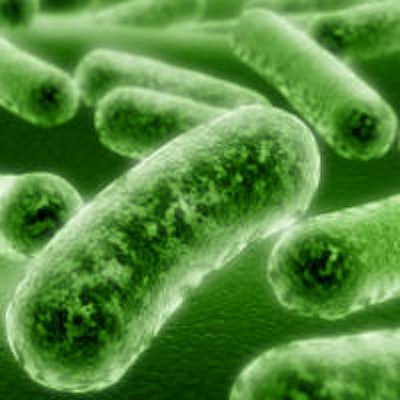
Bacteria living in the root canal system are the enemy in the course of successful endodontic therapy. Consequently, some endodontic sealer manufacturers have created products with antimicrobial properties.
Now a team of German researchers has compared the antibacterial effect of eight different sealers and two temporary sealers on three endodontologically detectable species of bacteria and found that one comes out on top (Dental Materials, May 2013, Vol. 29:5, pp. 542-549).
Interestingly, the antibacterial effect of commercially available sealers has not been studied extensively, the researchers noted.
The study included the following eight definitive root canal sealers and two temporary root canal cements containing calcium hydroxide:
- 2Seal (VDW)
- AH Plus (Dentsply)
- Apexit Plus (Ivoclar Vivadent)
- EndoREZ (Ultradent)
- Hermetic (Lege Artis)
- ProRoot MTA (Dentsply)
- RSA RoekoSeal Automix (Roeko)
- Sealapex (Kerr)
- Calxyl Red (OCO Präparate)
- Gangraena-Merz (Merz Dental)
"AH Plus, Hermetic, Sealapex, and EndoREZ were capable of inhibiting at least two species [of bacteria] in freshly mixed and one species in set condition," wrote the study authors, from Jena University Hospital and Friedrich-Schiller University in Germany and the University of Manchester School of Dentistry in the U.K. "Hermetic, a sealer on zinc oxide-eugenol base, had a suppressing effect on all species tested. In comparison with the other sealers tested, it was observed to develop the largest inhibition zones in the agar diffusion test (ADT)."
Hermetic received additional praise for its performance in the direct contact test (DCT) as well.
"Direct contact between Hermetic and the tested bacteria led, within 24 hours, to a significant reduction of colony-forming units compared to the untreated positive control," they wrote. "The suppressive effect of Hermetic is probably based on zinc oxide-eugenol, a main component of the sealer."
The ADT test was conducted on sealers when they had been freshly mixed and after they had set. A monoculture of bacteria was applied to agar. Then 20 mg of freshly mixed sealer was spread evenly onto cellulose plates and placed onto agar plates that had been prepared with bacteria suspension. Afterward, in 10 test series, the researchers studied the antibacterial effects. Each sealer was allowed to set in the second experiment and was subsequently subjected to six test series. Chlorhexidine served as a positive control and distilled water as a negative control.
The DCT portion of the study utilized the sealers that had a good antibacterial effect so that the researchers could investigate them in greater detail. The wells of a culture plate were coated with each sealer and covered with a liquid medium and bacterial suspension. The control medium was used as a negative control, the researchers noted, while bacterial suspension with baseline cell concentration mixed with the liquid medium served as the positive control. After being stored in an anaerobic environment, the researchers took 9 readings in a 24-hour time period.
3 bacteria targeted
Although a broad spectrum of bacteria may be responsible for infected root canals, the researchers selected only three, based on the frequency with which they were detected and determined to be the cause of treatment failure in previous studies. Enterococcus faecalis (E. faecalis) "is detectable in about 77% of the cases resistant to treatment," the researchers noted. "Fusobacterium nucleatum (F. nucleatum) and Poryphyromonas gingivalis (P. gingivalis), both being known parodontopathogens, are frequently observed in connection with apical periodontitis."
"In the ADT, only the Hermetic sealer in the freshly mixed state markedly suppressed the growth of E. faecalis," the researchers noted. "In the freshly mixed state AH Plus, Hermetic, Sealapex, 2Seal, EndoREZ, and ProRoot MTA showed a suppressive effect on F. nucleatum. After hardening, inhibition of F. nucleatum could only be observed for Hermetic, Sealapex, and EndoREZ."
P. gingivalis was significantly suppressed in both states by AH Plus, Hermetic, Sealapex, Apexit Plus, and EndoREZ, while 2Seal and ProRoot MTA only provided suppression when freshly mixed. Three -- RoekoSeal, Gangraena-Merz, and Calxyl -- performed poorly, with "no growth-inhibiting effect on any species investigated," the researchers noted.
Four sealants made the cut for the DCT: AH Plus, Hermetic, Sealapex, and EndoREZ. Both AH Plus and Hermetic displayed significant suppression properties of E. faecalis and P. gingivalis, while Sealapex suppressed the latter and all four suppressed F. nucleatum.
Hermetic also performed well in a colony-forming units test designed to test the bactericidal effect of the sealers on E. faecalis; none of the other sealers had an impact. It and also "completely killed" F. nucleatum and P. gingivalis. AH Plus killed those two as well, while Sealapex suppressed the former and killed the latter.
Ultimately, the researchers determined that the set state of the tested sealers had less robust antibacterial properties. While AH Plus, Hermetic, Sealapex, and EndoREZ performed well enough to make it to the second phase of the experiment, the calcium hydroxide sealers did not perform well during testing.
"The levels of antibacterial activity we detected with the test materials containing calcium hydroxide -- Apexit Plus, Gangraena-Merz, and Calxyl -- were generally low," they wrote.
ProRoot MTA, 2Seal, and RoekoSeal Automix also did not fare well. ProRoot MTA only suppressed two out of three bacteria types when freshly mixed. 2Seal's inhibitory effect was low, while RoekoSeal Automix showed none.
"The use of Hermetic as a sealer in refractory cases of endodontic therapy could possibly reduce the failure rate. Whether the antibacterial activity of the sealers found in this in vitro study will lead to higher success rates of endodontic therapy on the whole, though, remains to be clarified by clinical studies," the researchers concluded.




